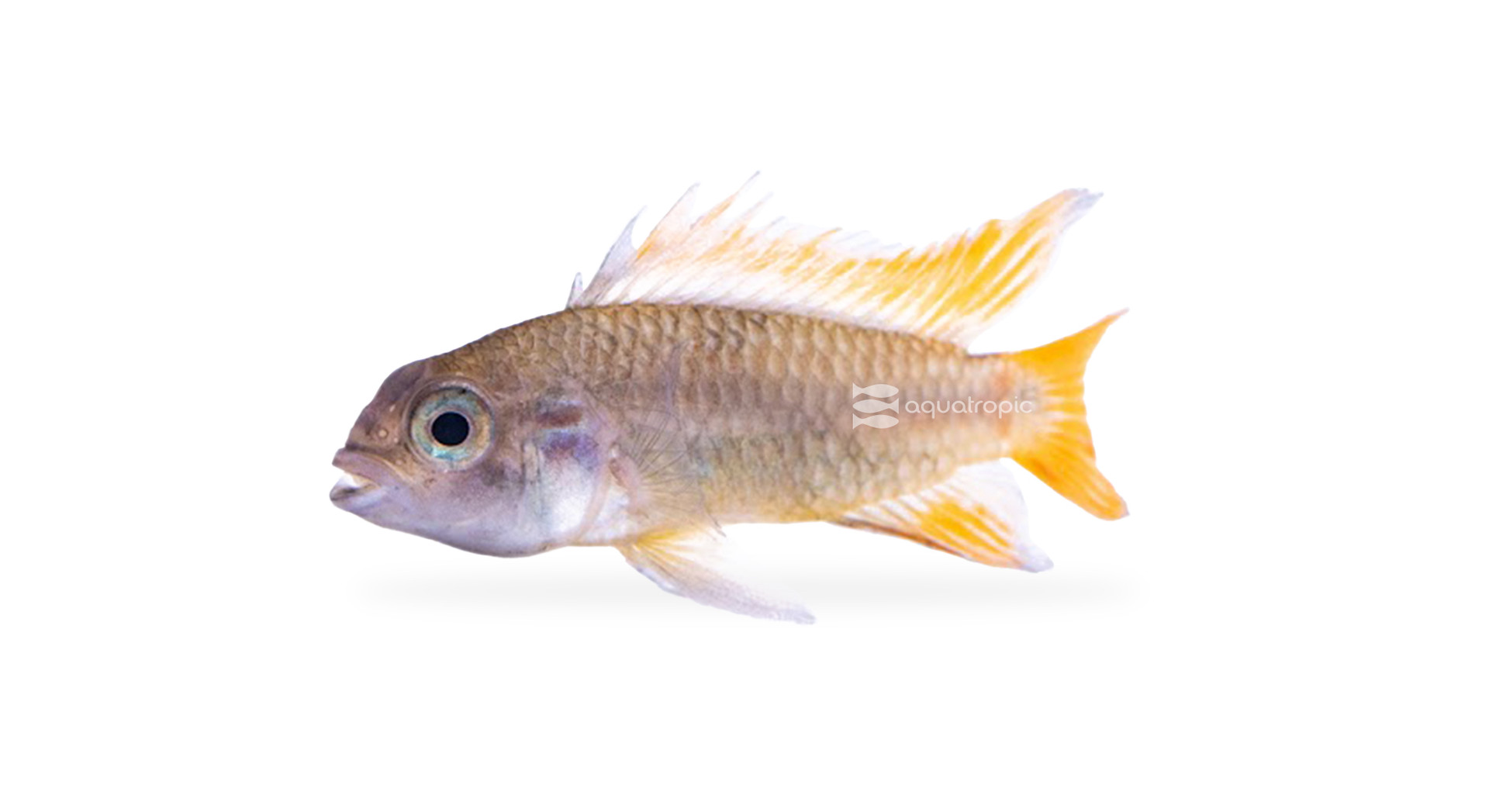A Cockatoo For You

The Dwarf Cockatoo Cichlid (Apistogramma cacatuoides) is a member of the family Cichlidae, better known as the Cichlids. These diminuative cichlids reach a length of about two inches, but they more than make up for their small size with stunning fins that display bright red, orange, black and blue coloration, accentuated by years of selective breeding in aquariums. Distribution and Habitat
The Dwarf Cockatoo Cichlid is a “New World Cichlid” hailing from the Amazon River basin. They prefer smaller, slow moving bodies of water, frequently littered with botanicals (leaves, twigs, seed pods etc) and are a good choice for a “blackwater” setup (an aquarium where the water is stained brown with botanicals or botanical tea).
Aquarium Requirements
These fish are very hardy and adapt well to life in the aquarium! A single male female pair of these fish should be housed in an aquarium no smaller than 20 gallons, preferably a 20 gallon “long” style aquarium. The aforementioned botanicals will be welcome and the life that grows on them as they decompose will provide food to pick at for adults and young alike. A natural habitat might include some plants and larger branches to create natural overhangs, which they like to stay underneath. In lieu of this type of cover, small caves can be purchased or created with items like aquarium safe pipe and pots.
Feeding
As mentioned before these fish are star aquarium residents and are also not picky about their diet. The foundation can be a high quality sinking pellet appropriately sized for their small mouths, supplemented with similarly sized frozen foods, or even live foods cultured by the aquarist.
Breeding
Apistogramma cacatuoides are very straightforward to breed and are likely to do this without interference. The male will get even more incredible coloration and will start doing some displays as the fish become conditioned for spawning. Eggs will be laid inside a cave of some kind and the female will guard and care for them as they develop. Watch their behavior throughout this process and if the male becomes too aggressive, be ready to move him to a different aquarium. As previously mentioned, a display relying on botanicals for part of its decoration, will naturally produce food for the young.
Conclusion
Dwarf Cockatoo Cichlids are hardy, display interesting social behaviors such as taking care of their young, and don’t require too large of an aquarium. They have amazing personality and are stunning to look at. What are you waiting for? Call your local fish store and ask them for sustainably sourced Dwarf Cockatoo Cichlids from Aquatropic today!